As inverter-driven mini-split technology gains HVAC market share by roughly 30 percent each year, it’s being embraced in even the unlikeliest of places. Eastern Indiana is home to a growing Amish community, where members are drawn to the rural surroundings and the opportunity to continue the farming lifestyle that they’re known for. Sticking close to Read more
Featured Articles

As inverter-driven mini-split technology gains HVAC market share by roughly 30 percent each year, it’s being embraced in even the unlikeliest of places.
Eastern Indiana is home to a growing Amish community, where members are drawn to the rural surroundings and the opportunity to continue the farming lifestyle that they’re known for. Sticking close to the land, however, doesn’t necessarily mean being uncomfortable or utilizing old technology. At least not anymore.
One Amish couple found a creative way to ease the rigors of harsh Indiana weather: humid summers and severe winter conditions.
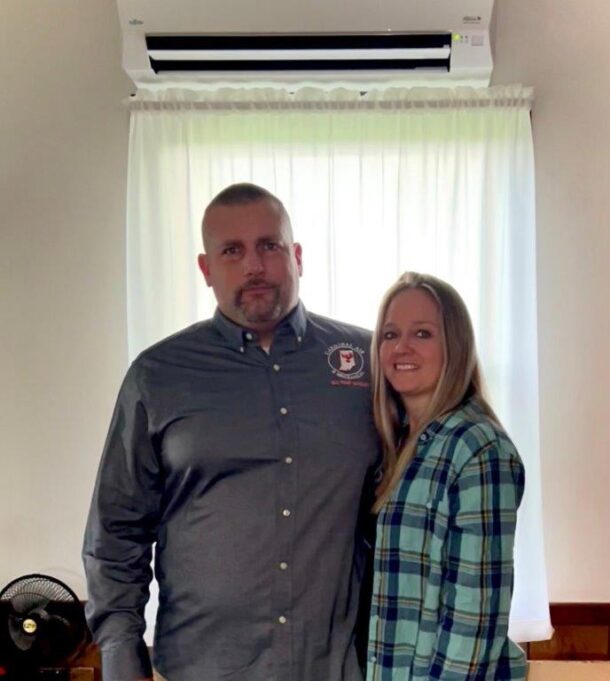
Tom and Laura Neuenschwander, owners of Cardinal Air and Mechanical, in Linn Grove, IN.
Tom Neuenschwander, owner of Cardinal Air and Mechanical, in Linn Grove, IN, received an inquiry this past spring about replacing a window air conditioning unit with a mini-split at an Amish farm. AC was priority, but the homeowner also wanted to use the system as a source of heat. The most interesting facet of the conversation was that the home is entirely off-grid, using an existing 12 kWh photovoltaic solar array and 24V, 450 AH battery bank as its sole source of electric power.
Neuenschwander founded Cardinal Air in early 2020, and has already grown the full-service mechanical company to seven employees. Having worked in the HVAC field since he graduated high school, he knew that mini-split installations would provide an area of rapid growth, and has made ductless systems a focus since the beginning.
“We buy Fujitsu mini-spits through Chris Smith at Plumbers Supply Company in Fort Wayne,” said Neuenschwander. “He helped us find the right size Halcyon unit for this application, given the unique nature of the power supply.”
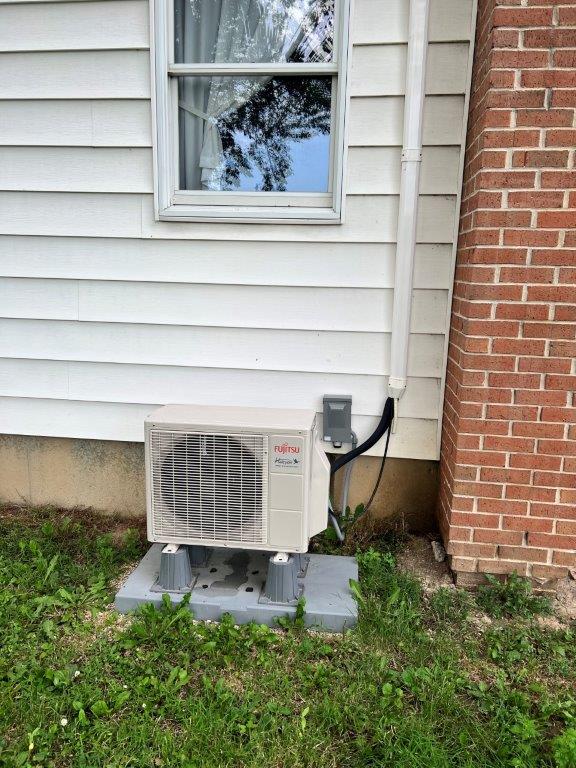
Cardinal Air and Mechanical installed a 9,000 BTUH mini-split heat pump at the off-grid residence to replace the window unit that was being used for air conditioning.
The two-story, 2,000-square-foot home was originally heated by a coal stove and cooled, partially, by a 6,000 BTU window air conditioner. A larger or second window unit couldn’t be used because the solar array and battery bank isn’t sufficient to handle a bigger load. The owners wanted to learn if they could improve their cooling performance with a mini-split, without the need to increase solar capacity.
“We had to size the mini-split to the source of power, not to the cooling load of the home,” said Neuenschwander. “In addition to the window unit, the small solar array powers a freezer, refrigerator, and a few lights. Domestic hot water is produced by a propane-fired tank.”
“Our biggest consideration was wattage draw,” he explained. When we looked at the Fujitsu specs, we found that peak draw from a 9,000 BTU Halcyon system on start-up is about 1,300 watts. The same system idles at 300-400 watts, with high draws around 600 watts. The battery bank could supply enough power to cover a 9,000 BTU unit, but not a 12,000 BTU system.”
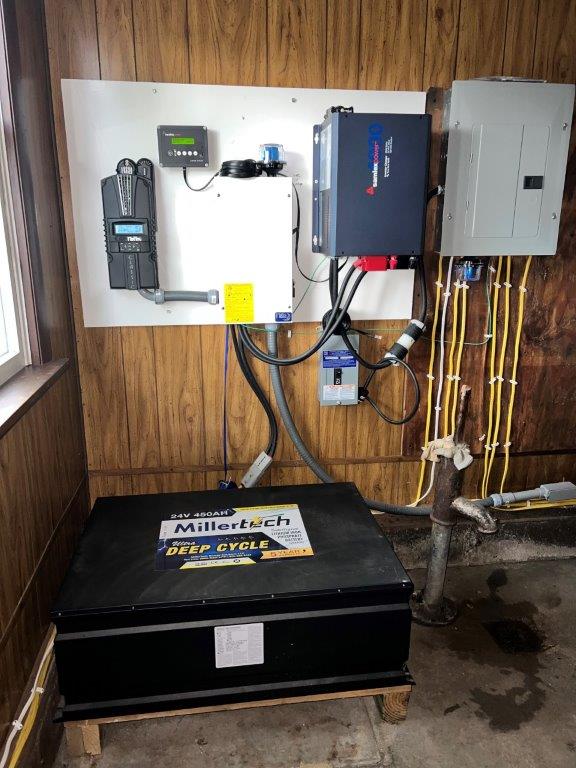
Power from the solar array is stored by a 450 AH battery bank, the sole source of power to the home.
When Cardinal Air purchased the system, they ordered a 115v model to match the transformer on the farm. Otherwise, the installation was quite ordinary. Cardinal Air standardized on Fujitsu as their brand of choice due to ease and simplicity of installation.
After having the unit in operation through all of summer 2022, the owners reported that the new mini-split cools the entire downstairs, instead of the one large room that the window unit used to serve. Beyond that, the mini-split uses substantially less power than the window unit, despite its 34 percent greater capacity. This becomes evident when numerous, consecutive cloudy days prevent good solar harvest.
“The homeowners reported that the mini-split now runs non-stop, whereas the window unit would deplete the battery bank after a day or two of cloudy weather,” said Neuenschwander. “It’s energy efficient enough at idle that it barely places a draw on the batteries. They’re cooling about 600 square feet with it. The only downstairs room that doesn’t quite stay at temperature is the kitchen, due to the floorplan. The humidity is gone, though. Oh, and the unit is a lot quieter than the window unit.”
“Because the system is sized to the power supply and not the heat load of the home, the owners know they’ll need supplementary heat,” continued Neuenschwander. “At this point, they just don’t know at what outdoor ambient temperature that will occur. So far, they say that the mini-split sure beats starting a fire in the stove to knock out the shoulder season chill.”
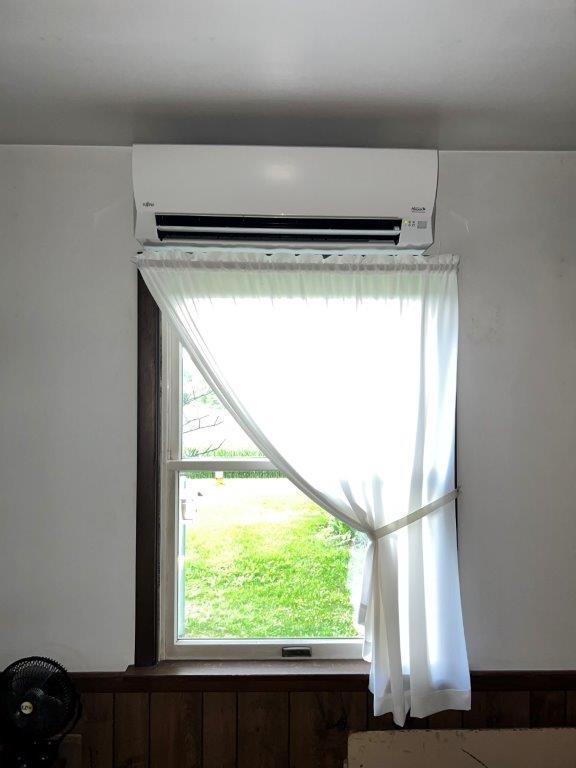
The indoor unit now cools the entire downstairs and uses substantially less power than the window unit, despite its 34 percent greater capacity.
The owners have no plans to expand the solar array, but are considering expanding the battery bank and potentially installing a Fujitsu unit upstairs. For now, they’re thrilled with the comfort improvements and energy savings they’ve made to their off-grid residence.
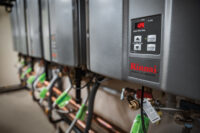
Propane provides a versatile, efficient water heating solution for any size building Water heating can account for up to a quarter of all energy use in some commercial buildings. And because nearly 80 percent of water heating energy use occurs in buildings built before 2000, replacing outdated systems with newer, high-efficiency water heating technology can Read more
Propane provides a versatile, efficient water heating solution for any size building
Water heating can account for up to a quarter of all energy use in some commercial buildings. And because nearly 80 percent of water heating energy use occurs in buildings built before 2000, replacing outdated systems with newer, high-efficiency water heating technology can offer significant improvements in terms of performance and savings.
Water heating systems can be powered by a variety of energy sources, but many contractors are finding high-efficiency propane tankless water heaters to be the best solution. These compact water heaters provide a versatile, sustainable, and energy-efficient solution for many commercial applications.
Tankless propane water heaters only heat water when it’s needed, making a storage tank unnecessary and eliminating standby losses associated with maintaining a tank of hot water. Thanks to their compact, space-saving design, tankless units free up valuable square footage in commercial buildings and cramped mechanical rooms. Because they don’t require a bulky storage tank, units can be wall-mounted, free-standing, or even moved outside. Plus, tankless units are less labor-intensive to install than tank-style units or boilers.
As contractors seek the best water heating solution for their commercial customers, here are three key advantages of propane systems they should know:
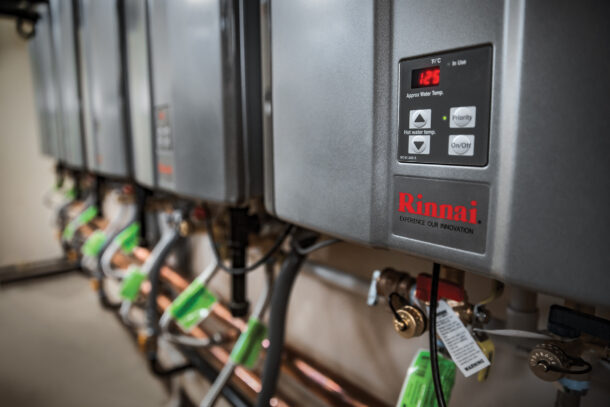
-
Propane tankless water heaters can meet the needs of any commercial building.
Propane tankless water heaters offer a versatile, high-performance water heating solution—whether in a new project, as a replacement for an existing storage tank, or a boiler system.
One of the biggest benefits of this tankless technology in commercial applications is its flexibility to meet a wide range of load types. Propane systems can provide water heating for a variety of commercial applications including restaurants, multifamily residences, hospitals, laundromats, salons, health clubs, educational facilities, and hotels. Individual tankless units can meet the demand of many small commercial building applications and in high-demand commercial applications—such as hotels and restaurants where users need high flow rates, high temperatures, or both. Multiple units can be banked together in larger groups to provide a high-value design solution or even use a single unit with multiple heat exchangers delivering up to 3 million BTU/hr.
Most importantly, propane is a winning solution in buildings without access to natural gas—which is especially beneficial for resorts and lodging facilities that are oftentimes located well off the natural gas line.
-
Propane water heating offer significant cost savings and superior energy efficiency.
The occupancy and use of many commercial buildings may change over time, but energy efficiency and cost savings will remain key considerations. Propane water heating technology offers a long lifespan, competitive operational costs, and a lower total cost of ownership compared with other options.
The trend toward energy efficiency and zero net energy buildings isn’t slowing down. Now more than ever, commercial building owners are emphasizing energy efficiency, and they’re seeking products and designs that will support their efforts.
One of the most important benefits propane tankless units offer building owners and operators is energy-efficient operation and subsequent cost savings. Propane tankless units have efficiency ratings of up to 98 percent, these systems feature a condensing design that extracts additional thermal energy from combustion gases to heat incoming water.
Commercial operations have experienced significant cost savings after switching to propane. Notably, a Nebraska brewery, Bolo Beer Company, decreased its operating costs by more than 25 percent by using propane water heaters instead of electric water heaters. Ruby’s Inn, a resort in Utah’s Bryce Canyon National Park, is saving approximately $6,000 a month installing a system of propane tankless water heaters.
Beyond their noteworthy efficiency ratings, propane tankless systems can function for up to 20 years or more strengthening their value proposition in commercial applications. High-efficiency propane tankless water heaters also offer attractive paybacks, better reliability, and long-term energy savings—all helping offset higher initial capital costs. And planning your retrofit away from electric water heating to propane tankless water heating can save all the costs associated with emergency replacements and damage that can occur when storage tanks fail.
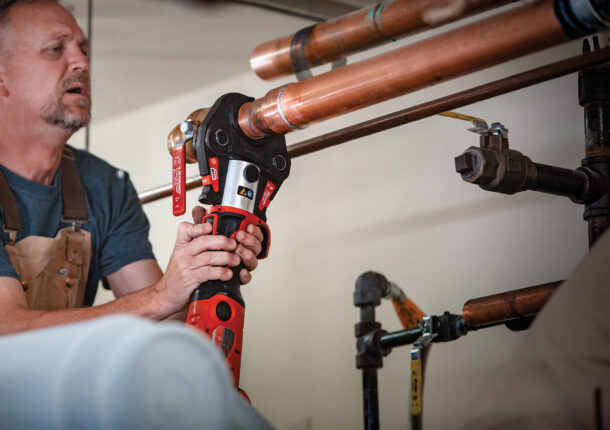
-
Propane tankless units help reduce a building’s carbon footprint.
In addition to decreasing energy consumption and costs, propane systems can make buildings more sustainable. According to data from the Propane Education & Research Council (PERC), propane tankless water heaters produce up to 47 percent fewer nitrogen oxide (NOx) emissions, 61 percent fewer greenhouse gas emissions, and 91 percent fewer sulfur oxide (SOx) emissions than electric storage tank water heaters powered by grid supplied electricity.
Switching from an electric storage tank water heater to a propane tankless water heater can prevent more than one ton of greenhouse gas emissions from entering the atmosphere each year—the same amount produced from driving a car more than 3,000 miles.
Water heating continues to be a major energy consumer in commercial buildings. Whether seeking increased energy efficiency, better performance, or a smaller carbon footprint, building owners can rely on propane to deliver a sustainable water heating solution in any size building.
To learn more about the benefits of commercial tankless systems, visit Propane.com/Water-Heating.
 Bryan Cordill is the director of residential and commercial business development at the Propane Education & Research Council. He can be reached at bryan.cordill@propane.com.
Bryan Cordill is the director of residential and commercial business development at the Propane Education & Research Council. He can be reached at bryan.cordill@propane.com.
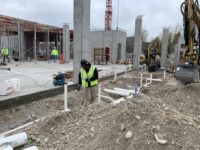
Bozeman, Montana is a city on the move, no doubt about it. As the nearest major passenger airport to Yellowstone National Park and the city nearest Big Sky Ski Resort, “Boz-Angeles” is currently growing at a rate of 3.2% annually. Its population has increased by 42.9% since the most recent census, which recorded a population Read more
Bozeman, Montana is a city on the move, no doubt about it. As the nearest major passenger airport to Yellowstone National Park and the city nearest Big Sky Ski Resort, “Boz-Angeles” is currently growing at a rate of 3.2% annually. Its population has increased by 42.9% since the most recent census, which recorded a population of 53,293 in 2021.
Of course, housing demand is rising, so the addition of a five-story mixed-use residential building fit in well with the City of Bozeman’s vision for its future downtown and added much-needed housing stock. The Merin is a mid-rise building that features 31 living units above two ground level retail spaces, with 35 parking stalls. Encompassing over 71,000 sq. ft., it will also feature a courtyard, and private balconies for the residential units.
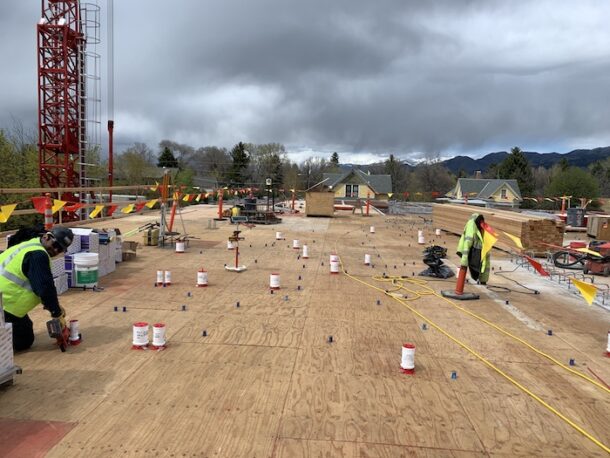
The ability to laser scan the building to get extremely accurate measurements on floor and wall penetrations allowed Harvey’s Plumbing to accurately model and then prefabricate and quickly install the plumbing using Allied BIM software.
DCI Engineers designed the primary framing systems for The Merin’s podium-style construction (post tensioned concrete slab design for the ground level and wood framed above-grade levels). The engineering team also designed the building’s cantilever sizes to maximize the efficiency of the concrete slab and provided maximum economy of the post-tensioned concrete system by coordinating regular column spacing for the ground floor layout.
Plumbing planning
The project ground broke in the fall 2019 and was off to a good start when ownership changes jostled the plumbing installation schedule. The project used Aquatherm polypropylene piping for the domestic cold-water mains, Uponor PEX in all the units, PVC for the drain and waste, and cast-iron risers on toilet stacks, with copper stub outs coming off the water heaters.
Harvey’s Plumbing, a Bozeman-based, full-service plumbing and mechanical contractor was tabbed for the project’s plumbing installation (Harvey’s was subsequently purchased by Bozeman-based Williams Plumbing and Heating). Harvey’s had recently completed three similar projects in the Bozeman area, so the project was straightforward, and there was an established process for the plumbing installation, resulting in less time spent modeling the plumbing system design. Still there were challenges.
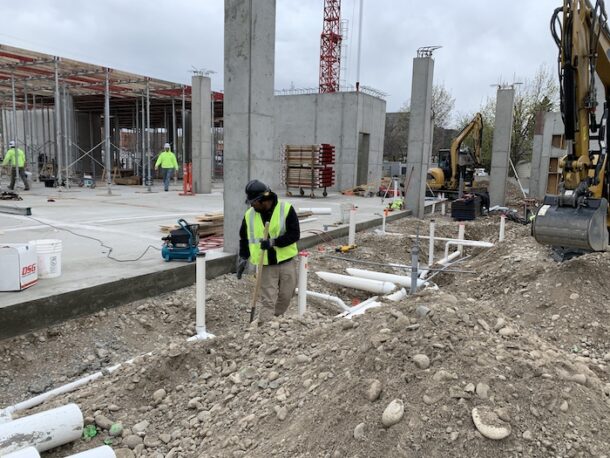
Harvey’s Plumbing saved an estimated 20% on the Merin job by prefabricating plumbing assemblies and spools in the shop using Allied BIM software and an automated laser positioning system.
According to Mitch Rausch, Director of Preconstruction for Williams Plumbing/Harvey’s Plumbing; “It’s a pretty typical downtown Bozeman multifamily condo unit and it worked out pretty well. The only real issue we ran into on that job were owner finish changes and material delays.”
By June of 2020 COVID had become a factor and while the pandemic didn’t necessarily slow the job down, it did cause a staffing issue for Harvey’s. “We definitely had to deal with lack of manpower just because it seemed like we always had one guy out for about a year.”
Harvey’s crew mix on the project included a superintendent, two then-recently tested plumbers, two apprentices, and two laborers. “We had a pretty young crew over there and that’s where that modeling really kind of benefited us,” he added.
Modeling efficiency – through software
The modeling of the plumbing system’s design was much quicker and more efficient on this project because Harvey’s was able to maximize its laser positioning system, a semi-automatic TigerStop saw, by connecting it to Allied BIM. Allied BIM is a new design-to-fabrication software program created by Bob Harvey, (previous owner of Harvey’s), and Brian Nickel (who had been Harvey’s Virtual Design & Construction Manager).

Allied BIM software and an automated laser positioning system help tremendously with building efficiency.
The duo cofounded Allied BIM in 2019 with the intent of improving the prefabrication process in the PHVAC, electrical, siding and framing, and modular building industries. “The machine shop is disconnected from the designers, and the field is disconnected from the shop, and we saw a way to build it better,” Nickel said of the venture.
While Harvey’s had been honing its modeling and prefabrication processes for years, for a shop its size, it was far head of the industry back in 2019. Traditionally, prefabrication shops get a designer’s drawings on a thumb drive or sheets of paper and a fabricator manually enters those instructions into a machine, which cuts the parts. A single error in that process can lead to expensive mistakes, such as ordering too many materials by as much as 40%, as well as huge material-waste-ratios.
Allied connects digital models directly to prefabrication machinery, eliminating errors and waste, while improving safety, trackability, and connectivity. According to Harvey, using traditional manual workflows, designers can send a fabrication shop about 10 drawings a day, but with Allied BIM’s automated data flow, they can send as many as 80 spools a day — an 800% productivity gain. Plus, the connectivity allows data to flow bidirectionally, allowing the fab shop to send the design team real-time updates and requests for additional instructions.
Software solves staffing shortage
Harvey’s had used Allied BIM on some of these previous similar condominium projects but connecting it to the TigerStop was what prompted a huge change in productivity. “At that time, we were still fully Harvey [not yet part of Williams], so we were a pretty small shop at the time, and in order to get the prefab done we would have to pull the plumbers off of the jobsite, bring them into the shop, and have them prefab it,” Rausch explained.
“We didn’t have dedicated fabricators. That’s about the time we started to add them. We had one part-time guy in the summer, he didn’t have a lot of experience, but he did some of it. And then if we’d pulled two key guys away from the jobsite, the general [contractor] would get upset even though we’re still making progress on the project. But it allowed us to do that pretty efficiently without losing too much presence on the jobsite.”

A load of PVC is lifted into place for unloading into a second-floor window at The Merin. According to Harvey’s Plumbing’s Mitch Rausch, the ability to get the right prefabricated assemblies to the right spot on the job provided a huge savings.
Improved safety was also a bonus. Using Allied BIM and the semi-automatic TigerStop allowed non-jobsite personnel to cut, prep and place the parts in bins so that they could be shipped to the jobsite where field installers could just plug them in. “It allowed us to really ‘lean up’ what we were doing and fit some stuff into our schedules that normally we wouldn’t be able to, and that the project schedule wouldn’t have really allowed us to do,” Rausch added.
Harvey’s Visual Design & Construction Engineer, Baylie Frost, performed all the modeling on The Merin project. “She was the only one working on modeling it, and she only had so much time, and she was also helping as project manager,” Rausch said. “So, if we were to tie her up making spool sheets, we would’ve had to add another BDC [building design construction] person to that project without Allied.”
Frost estimated that her spooling time on the project was reduced by 50% or more thanks to using Allied BIM, and labeling the spools was completed at least 10 times faster than the traditional method, while it also provided major organizational benefits.
Rausch also explained that using the Allied modeling and the TigerStop saw allowed them to limit wasted pipe sections to “just very, very small wafer pieces of pipe.” “I bet there’s at least 20 to 30% there in savings in PVC.” He added that an even larger savings came from fabricators not wasting time trying to salvage smaller pieces of pipe. “Traditionally, you’re going to have scraps and you’re going to have to pick up that scrap and try to cut up that scrap and use it. And that’s where you waste your time.”
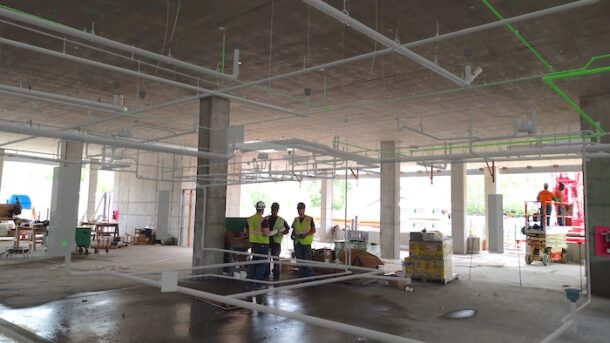
Allied BIM software, laser scanning, and a Microsoft HoloLens mixed reality headset allowed the Harvey’s team to be very exacting when it came to the design and installation of The Merin’s plumbing system, delivering a profitable project, and meeting a tight deadline.
With Allied BIM and an automated saw, the operator does not need to pull out a tape measure, hold it to the pipe, and mark it, he or she can just focus on the saw. Thus, they’re less likely to incur an accident. “It’s taking some of that ‘thinking’ and some of that extracurricular stuff you’d have to do away, so you can really focus on just cutting the pipe,” Rausch said.
Additionally, Harvey’s was able to streamline their bid on the job knowing that they would be achieving some time, labor, and material savings thanks to their model-to-design process. While there were several mitigating factors on The Merin project, Rausch said that when it comes to modeling and exporting a design, spooling it, prefabricating it offsite and installing on a jobsite, that 20% labor savings are extremely realistic.
Savings trips up and down the stairs
Rausch explained that Allied BIM also helped enormously with the organization of piping materials. “With this job, there are five flights of stairs in them. And you’ve got to go up and down the stairs every time you don’t have a part or piece you’re fitting. And if we can model it and fab it and get everything grouped together in a nice, clean kit and get everything into that room at one shot, just saving a couple trips up and down the stairs every day for 8 to 10 guys, makes or breaks a job.
So, it’s the efficiency you gain by that. Out of everything we do, if we could have everything sitting there for the plumber to install in that unit, it saves trips looking for parts, having the wrong part, having something messed up. That’s the difference between making money and not making money, 100%.”

Welcome to another edition of our Hub Spotlight series where do a deep dive into the men and women who make the trades great. This spotlighted tradesperson tells us that he really enjoys trashy reality TV. “Nothing like kicking your feet up and watching someone making horrible life decisions on 90-Day Fiancé on a Sunday Read more
Welcome to another edition of our Hub Spotlight series where do a deep dive into the men and women who make the trades great. This spotlighted tradesperson tells us that he really enjoys trashy reality TV. “Nothing like kicking your feet up and watching someone making horrible life decisions on 90-Day Fiancé on a Sunday evening.” Joking aside, for Keith McGillivary (@mps_207)—full-time business owner of McGillivary’s Plumbing Services (MPS), Gardiner, Maine, for the past two years—his story into the plumbing trades is an interesting one.
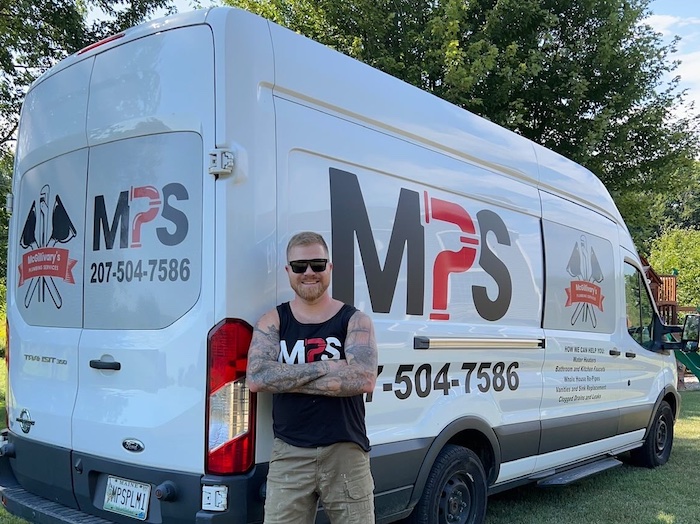
McGilivary’s path started in a small town when a small plumbing business was looking for a helper, and he was looking for a job. “Little did I know it would be the start of where I am now,” says McGillivary. Before college, McGillivary started working for a small plumbing business that primarily focused on service work. The owner, Russell, was/is a great mentor and really took the time to help him understand not only what they were doing, but why they were doing it.
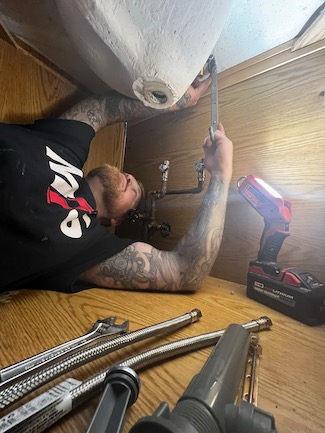 After deciding to pursue plumbing, McGillivary attended Southern Maine Community College (SMCC) for its plumbing and heating program. Through college, he continued to work alongside his mentor, and after graduation, continued to work for him full time for three years. McGillivary then took a job at Bath Iron Works (BIW) as a pipefitter building destroyers, ships for the United States Navy. “The piping systems were complex, and although it was “plumbing on a ship,” it was completely different. I found it fun to learn the ins and outs of that particular plumbing,” says McGillivary.
After deciding to pursue plumbing, McGillivary attended Southern Maine Community College (SMCC) for its plumbing and heating program. Through college, he continued to work alongside his mentor, and after graduation, continued to work for him full time for three years. McGillivary then took a job at Bath Iron Works (BIW) as a pipefitter building destroyers, ships for the United States Navy. “The piping systems were complex, and although it was “plumbing on a ship,” it was completely different. I found it fun to learn the ins and outs of that particular plumbing,” says McGillivary.
Eventually, McGillivary joined the Pipefitter Test Crew and tested the piping systems after they were built. He worked there for six years, but the whole time he continued to work nights and weekends doing plumbing work on the side. “This allowed me to gain hours and knowledge for my Master’s test. After passing my Masters, I decided to make the plunge into self-employment because I wanted the schedule flexibility for my family,” says McGillivary.
 In fact, McGillivary’s biggest motivation for self-employment was time, rather than money. “I have learned to set firm boundaries for myself when scheduling and taking on jobs. I have been able to take more time off for my family than ever. Being a service plumber, in this day in age, you could work 24/7 if you wanted. I try to work ‘normal’ hours, and if I can take a day off for family stuff, I always do,” says McGillivary.
In fact, McGillivary’s biggest motivation for self-employment was time, rather than money. “I have learned to set firm boundaries for myself when scheduling and taking on jobs. I have been able to take more time off for my family than ever. Being a service plumber, in this day in age, you could work 24/7 if you wanted. I try to work ‘normal’ hours, and if I can take a day off for family stuff, I always do,” says McGillivary.
Shout Out to Mentorship
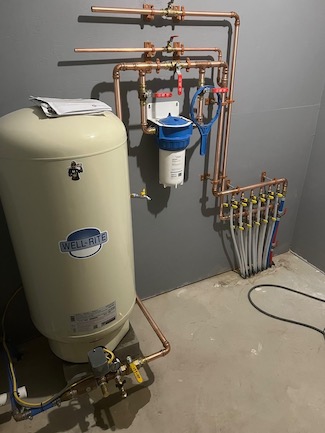 According to McGillivary, Russell taught him everything he knows about plumbing and owning a business. “He taught me all the hands-on work, how to write estimates & bid on jobs, customer relations, and how to balance a small business/family life,” says McGillivary.
According to McGillivary, Russell taught him everything he knows about plumbing and owning a business. “He taught me all the hands-on work, how to write estimates & bid on jobs, customer relations, and how to balance a small business/family life,” says McGillivary.
And McGillivary wants to pay it forward. “I definitely consider myself a role model for others looking to join the trade. I feel I am a good example that hard work and dedication pays off,” says McGillivary. “My mentor was so important to my journey that I try to give back what I can by being transparent about my plumbing knowledge.”
Uplifting the Trades
Recently, there has been a big push for kids to attend trade school so there has been a shift in younger people showing interest, says McGillivary. “Trade school was beneficial for me to learn the code side of things, in an environment different from the hands-on work. I think we could get more interest in the trades if the schools showcased all the different avenues someone could go once they completed their schooling, and the financial opportunities that come with them. Everyone expects a doctor to make six figures, but not everyone knows you can make that in the trades without massive student loan debt,” says McGillivary.
“Everyone expects a doctor to make six figures, but not everyone knows you can make that in the trades without massive student loan debt.”
Social media can also be used to attract more people to the trades. “I see it all too often when guys in the trade are way too harsh on people for asking questions on Facebook plumbing pages. There are so many people asking questions for the purpose of learning and gaining knowledge. We were all there at some point, so be kind enough to answer the questions in a helpful manner. Social media can also be used to form “new-to-the-trades” communities and to provide seminars,” says McGillivary.
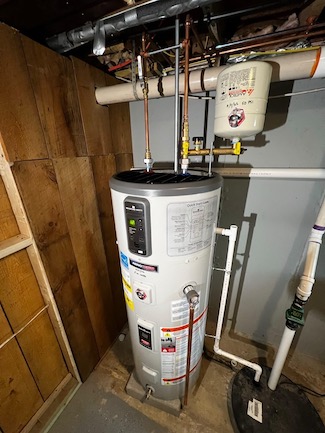 Social media also has played a huge role in the growth of McGillivary’s business. Starting as a small, part-time business with the help of word-of-mouth recommendations on small town Facebook pages, which made McGillivary realize that social media could be used to showcase the work he is doing on a day-to-day basis. “I use my Instagram to show what I am about as a business and the work I put out. I have found that if a customer can see why you are more expensive than the other guy, then they are more likely to go with you. I use it as an open-door insight to my business both in reels and daily stories,” says McGillivary.
Social media also has played a huge role in the growth of McGillivary’s business. Starting as a small, part-time business with the help of word-of-mouth recommendations on small town Facebook pages, which made McGillivary realize that social media could be used to showcase the work he is doing on a day-to-day basis. “I use my Instagram to show what I am about as a business and the work I put out. I have found that if a customer can see why you are more expensive than the other guy, then they are more likely to go with you. I use it as an open-door insight to my business both in reels and daily stories,” says McGillivary.
McGillivary uses social media to learn little tricks of the trade that he just wouldn’t have been exposed to, being from such a small town. For McGillivary, it is extremely beneficial to be able to have conversations with such great tradesmen. He also talks to apprentices daily or weekly about projects, and gives them advice. “I wish when I was learning, I had this platform to learn and meet others. As visual learners, much like a lot of trades guys I know, it’s changed the way we can learn,” says McGillivary.
Making Time
Summers in Maine are short, so McGillivary tries to spend every nice weekend camping in his camper. In the winter months you can find him on his snowmobile at camp. “I would love to ride my snowmobile from camp in northern Maine to the Gaspe Peninsula to complete the “Great Gaspe Snowmobile Tour,” a six-day, 1,500-mile ride around some of the best trails,” says McGillivary.
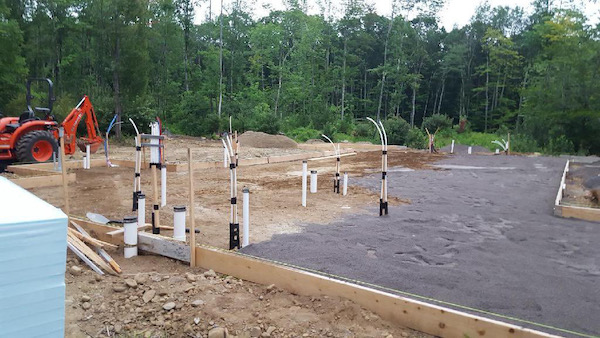
And the last day McGillivary said it was a great day? “You know it’s funny, as I look back on just yesterday—camping with my family, beautiful weather, everyone smiling, does it get much better than that? So, the answer to that question would be yesterday!”
Go-To Tools on the Job
According to McGillivary, his go-tools are a couple pairs of Knipex Cobra pump pliers, a 6-in-1 screwdriver, and an adjustable wrench. Any good service plumber can fix most things with those!
Also, I find myself feeling naked if I don’t have my Leatherman Wave on me. Another great tool that has many uses.
Lastly, if there was one tool that changed the service plumbing game, it’s the M12 Milwaukee press tool. If you’re running a service company and don’t have one, you’re late to the party.

Eric Aune with Mechanical Hub joins American Plumber Stories for a “Signing Day” special at the Build My Future event, hosted by the Iowa Skilled Trades. Take a look at the exhibitors and the hands-on experiences offered for students considering a career in the trades. Iowa Governor, Kim Reynolds, also presents at the celebration and Read more
Eric Aune with Mechanical Hub joins American Plumber Stories for a “Signing Day” special at the Build My Future event, hosted by the Iowa Skilled Trades. Take a look at the exhibitors and the hands-on experiences offered for students considering a career in the trades. Iowa Governor, Kim Reynolds, also presents at the celebration and signs each student’s letter of intent as they commit to their future in the trades after high school.
